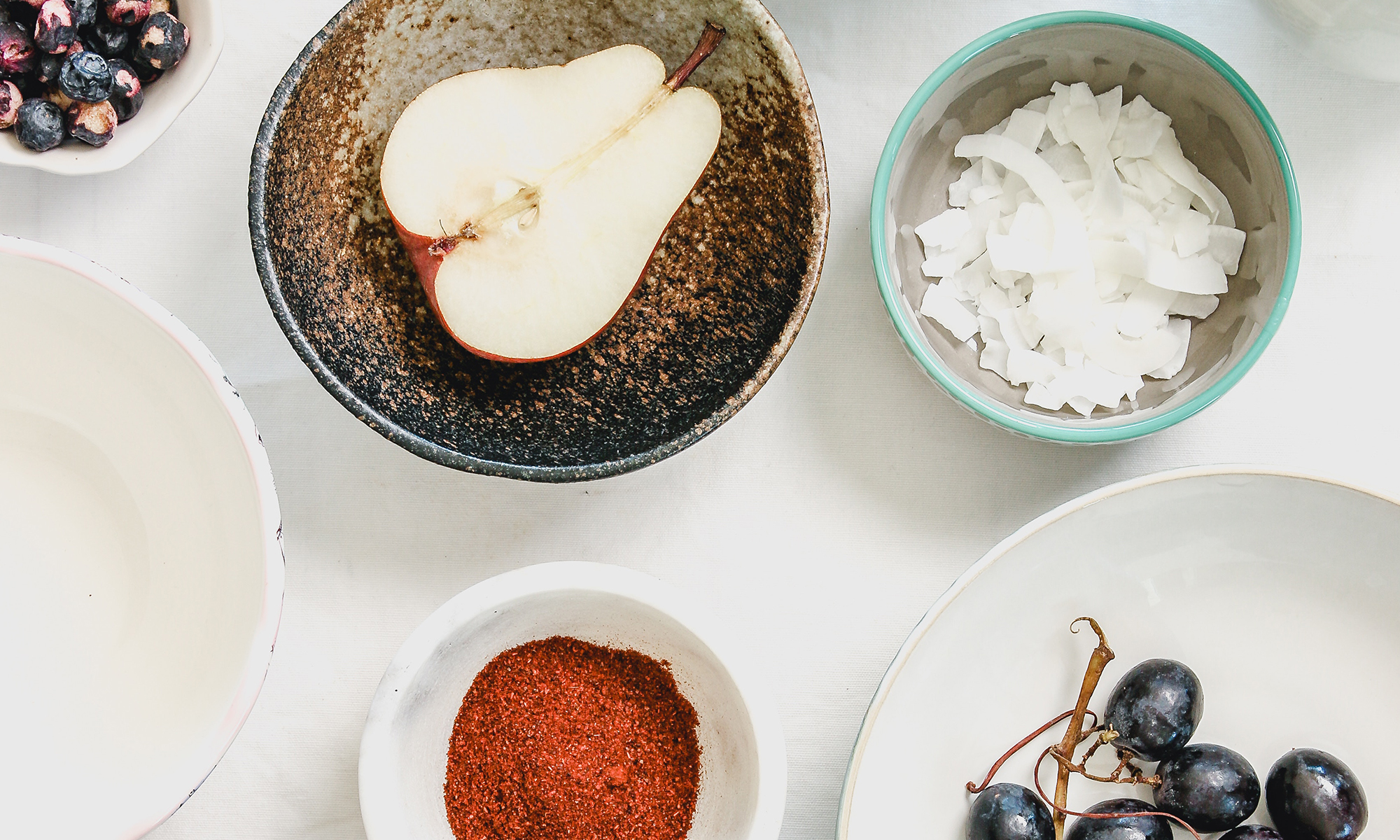Most cooking techniques involve some form of fat or oil. Marinades have oil, sautés and stir-fries require a thin layer of fat in the bottom of the pan, and broiling works better if the food has a thin sheen to protect and also help brown the exterior. Steaming and poaching are low-fat methods that usually require no added fat.
But back to the fat…the question becomes, which fat do you use when? And how can you effectively substitute if you do not have the required ingredient on-hand?
There are three ways that fat/oil is used in recipes: as a cooking medium, as a flavor enhancer and as a moisture additive (I just made up that term). Each way requires a different way of looking at the issue.
Where There’s Smoke There’s Fire
Most of you have heard of smoke points, right? This is the temperature that oil begins to smoke… not to be confused with the flash-point, the temperature when oil will catch fire. So when choosing oil for sautéing, frying or other high heat cooking you want to choose an oil with a high smoke point – oils with lower smoke points turn bitter and lose their lubricating qualities when over-heated.
In general, refined oils have a higher smoke point than unrefined. This holds true for olive oils as well. What does this mean for your cooking? Using extra-virgin olive oil for high heat cooking destroys the flavor. It’s a waste of a high-priced, high-flavor oil. Better to use 100% pure olive oil, which is from the second or third pressing and has a higher smoke point.
Many people use olive oil for cooking because of its purported health properties. It’s ratio of mono and polyunsaturated fats make it a better choice for raising HDLs and lowering LDLs. Canola oil is rivals olive oil in this area.
Similarly, butter has a higher smoke point when it’s clarified. The milk solids in butter (which make up 5%-15%) burn at a much lower temperature than the butterfat. By removing the milk solids, butters smoke point increases to 400F.
Oils for High Heat Cooking
Peanut, Canola, 100% Pure Olive, Clarified Butter, Grapeseed.
I use canola oil when I don’t want any flavor from the oil. When I’m frying banana spring-rolls, or another dish where I know it will absorb the flavor of the oil, I use clarified butter. I avoid peanut oil because (1) I’m allergic to nuts and (2) lots of other people are too, and it becomes a hidden allergen.
I save the extra-virgin olive oil for salad dressings and low-heat cooking where I want that distinctive flavor.
Photo Credit: Ellen Callaway
Banana Spring Rolls with a Drizzle of Chocolate and Ginger
Spring Rolls
3 bananas
6 tbs. brown sugar
¼ cup clarified butter or plain oil
12 spring roll wrappers
melted dark chocolate
1. Cut banana in half lengthwise, and then in ½ again width-wise
2. Lay a spring roll wrapper on a work surface with a point facing towards you. Put a piece of banana on the wrapper a little bit off center, and ½ tbs. brown sugar on top. Roll the spring roll like a burrito – pull the sides over and then roll it up.
3. Repeat process to make 11 more spring rolls
4. Heat oil or butter in a large skillet to medium high. Cook spring rolls until brown and crispy on all sides. Serve with crème anglaise and a drizzle of melted chocolate.
Crème Anglaise
3 egg yolks
1/4 cup sugar
1 cup half -n- half
3 slices of fresh ginger
Scald half -n- half with ginger. In a separate bowl, whisk eggs and sugar. Slowly add half -n- half, stirring constantly. Return to heat and continue cooking over low heat, stirring constantly with a rubber spatula until the custard thickens. Remove from heat immediately. Strain out ginger.

These sound absolutely delicious! I have spring rolls that have been hanging around – what a great idea to make a sweet dessert with them.
Wow, this sounds fabulous, I mean FABULOUS!!
what a wonderfully informative post! its all useful knowledge, but my favorite little portion is the part where you include the recipe for a phenomenal treat. excellent write-up, julia!
Thanks for the short lesson. I rarely notice the flavour of oils unless its in a salad dressing. I also dont notice the difference between butter and margarine in baking, unless the recipe calls for a lot of butter. I should probably pay more attention.
Very helpful post. Thanks Julia.LL
wow those rolls look DELICIOUS!!!
I like your cooking philosophy. Im trying to do the same in the Bay Area.
These sound incredible! Ive had something similar at Thai restaurants with coconut ice cream!